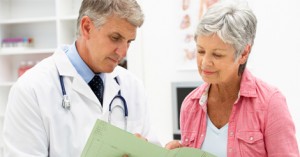 Other than skin cancer, breast cancer is the most common cancer among American women. Getting regular mammograms can lower the risk of dying from breast cancer. If you are 50-74 years old, be sure to have a screening mammogram every two years. If you are 40-49 years old or think you may have a higher risk of breast cancer, ask your doctor when to have a mammogram screening.
Other than skin cancer, breast cancer is the most common cancer among American women. Getting regular mammograms can lower the risk of dying from breast cancer. If you are 50-74 years old, be sure to have a screening mammogram every two years. If you are 40-49 years old or think you may have a higher risk of breast cancer, ask your doctor when to have a mammogram screening.
Breast Cancer Facts
- According to the Centers for Disease Control and Prevention, each year in the United States more than 200,000 women get breast cancer and more than 40,000 women die from the disease.
- Most breast cancers are found in women who are 50 years old and older, but breast cancer also affects younger women. About 11 percent of all new cases of breast cancer in the United States are found in women younger than 45 years of age.
- African American women have the highest breast cancer death rates of all racial and ethnic groups and are 40 percent more likely to die of breast cancer than white women.
Risk Factors
You may be more likely to get breast cancer if you have risk factors:
- Being younger when you had your first menstrual period.
- Never giving birth or being older at the birth of your first child.
- Starting menopause at a later age.
- Using hormone replacement therapy for a long time.
- Getting older.
- Having a personal history of breast cancer, dense breasts, or some other breast problems.
- Having a family history of breast cancer (parent, sibling, or child).
- Testing detects changes in your breast cancer-related genes (BRCA1 or BRCA2).
- Getting radiation therapy to the breast or chest.
- Being overweight, especially after menopause.
Talk to your doctor about ways to lower your risk and about screening.
Symptoms
It is important that women are aware of the symptoms of breast cancer, understand what they can do to lower their risk and get necessary screenings, such as self-breast exams and mammograms.
The most common symptom of breast cancer is a new lump or mass. A painless, hard mass that has irregular edges is more likely to be cancerous, but breast cancers can be tender, soft or rounded. They can even be painful. Therefore, it is important to have any new breast mass or lump or breast change checked by a healthcare provider experienced in diagnosing breast diseases.
Other possible symptoms of breast cancer include:
- Swelling of all or part of a breast (even if no distinct lump is felt)
- Skin irritation or dimpling
- Breast or nipple pain
- Nipple retraction (turning upward)
- Redness, scaliness or thickening of the nipple or breast skin
- Nipple discharge (other than breast milk)
Prevention and Early Detection
Staying at a healthy weight, being physically active, and limiting how much alcohol you drink can help reduce your risk of breast cancer. Although breast cancer screening cannot prevent breast cancer, it can help find breast cancer early, when it is easier to treat. Check with your doctor on which breast cancer screening tests are right for you and when you should have them.